|
Search, browse, and study this dictionary to learn more about the early American, Christian language. 
 1828.mshaffer.com › Word [c]
1828.mshaffer.com › Word [c]
C, the third letter in the English alphabet, and the second articulation or consonant, is a palatal, nearly corresponding in sound with the Greek x, kappa, and with the Hebrew, caph. It bears a middle place in pronunciation, between the aspirate, and the palatal. It is a Roman character, borrowed from the Gr.x, or from the oriental, which was used in languages written from right to left, and when inverted and the corners rounded, becomes C. In the old Etruscan, it was written with the corners rounded, but not inverted; in Arcadian, C, as now written. That its sound in Latin was the same, or nearly the same, as that of kappa, may be known from the fact, that the Greeks, while the Latin was a living language, wrote kappa for the Roman C. Perhaps the same character may be the basis of the Arabic. As an abbreviature, C stands for Caius, Carolus, Caesar, condemno, &c., and CC for consulibus. As a numeral C stands for 100; CC for 200; &c. In music, C after the cliff, is the mark of common time. In English, C has two sounds, or rather it represents two very different articulations of the organs; one close, like K, which occurs before a, o and u; the other, a sibilant, precisely like s, which occurs before E, I and Y. The former is distinguished in this vocabulary by C, which may be called ke. In Russ. C is precisely the English s, as it was in the old Greek alphabet.
|
Evolution (or devolution) of this word [c]
| 1828 Webster | 1844 Webster | 1913 Webster |
|---|
C, the third letter in the English alphabet, and the second articulation or consonant, is a palatal, nearly corresponding in sound with the Greek x, kappa, and with the Hebrew, caph. It bears a middle place in pronunciation, between the aspirate, and the palatal. It is a Roman character, borrowed from the Gr.x, or from the oriental, which was used in languages written from right to left, and when inverted and the corners rounded, becomes C. In the old Etruscan, it was written with the corners rounded, but not inverted; in Arcadian, C, as now written. That its sound in Latin was the same, or nearly the same, as that of kappa, may be known from the fact, that the Greeks, while the Latin was a living language, wrote kappa for the Roman C. Perhaps the same character may be the basis of the Arabic. As an abbreviature, C stands for Caius, Carolus, Caesar, condemno, &c., and CC for consulibus. As a numeral C stands for 100; CC for 200; &c. In music, C after the cliff, is the mark of common time. In English, C has two sounds, or rather it represents two very different articulations of the organs; one close, like K, which occurs before a, o and u; the other, a sibilant, precisely like s, which occurs before E, I and Y. The former is distinguished in this vocabulary by C, which may be called ke. In Russ. C is precisely the English s, as it was in the old Greek alphabet. |
C,the third letter in the English alphabet, and the second articulation or consonant, is a palatal, nearly corresponding in sound with the Greek κ, kappa, and with the Hebrew כ, caph. It bears a middle place in pronunciation, between the aspirate ה, and the palatal ג. It is a Roman character, borrowed from the Gr. κ, or from the oriental כ, which was used in languages written from right to left, and when inverted and the corners rounded, becomes C. In the old Etruscan, it was written Ɔ, with the corners rounded, but not inverted; in Arcadian, C, as now written. That its sound in Latin was the same, or nearly the same, as that of kappa, may be known from the fact, that the Greeks, while the Latin was a living language, wrote kappa for the Roman C. Perhaps the same character may be the basis of the Arabic ح.
As an abbreviature, C. stands for Caius, Carolus, Cæsar, condemno, &c., and CC. for consulibus. As a numeral, C. stands for 100; CC. for 200; &c. In music, C after the clef, is the mark of common time. – Encyc.
In English, C has two sounds, or rather it represents two very different articulations of the organs; one close, like K, which occurs before a, o and u; the other, a sibilant, precisely like s, which occurs before e, i and y. The former is distinguished in this vocabulary by C, which may be called ke. In Russ., C is precisely the English s, as it was in the old Greek alphabet. C before k, is mute; as in brick, sick. |
C
- C is the third
letter of the English alphabet. It is from the Latin letter C,
which in old Latin represented the sounds of k, and
g (in go); its original value being the latter. In
Anglo-Saxon words, or Old English before the Norman Conquest, it
always has the sound of k. The Latin C was the same letter
as the Greek ***GAMMA], ***gamma], and came from the Greek alphabet.
The Greeks got it from the Phœnicians. The English name of
C is from the Latin name ce, and was derived, probably,
through the French. Etymologically C is related to g,
h, k, q, s (and other sibilant
sounds). Examples of these relations are in L. acutus, E.
acute, ague; E. acrid, eager,
vinegar; L. cornu, E. horn; E. cat,
kitten; E. coy, quiet; L.
circare, OF. cerchier, E.
search.
- The
keynote of the normal or "natural" scale, which has neither flats
nor sharps in its signature; also, the third note of the relative
minor scale of the same.
|
| 1828 Webster | 1844 Webster | 1913 Webster |
|---|
Thank you for visiting!
- Our goal is to try and improve the quality of the digital form of this dictionary being historically true and accurate to the first American dictionary. Read more ...
- Below you will find three sketches from a talented artist and friend depicting Noah Webster at work. Please tell us what you think.
Divine Study
 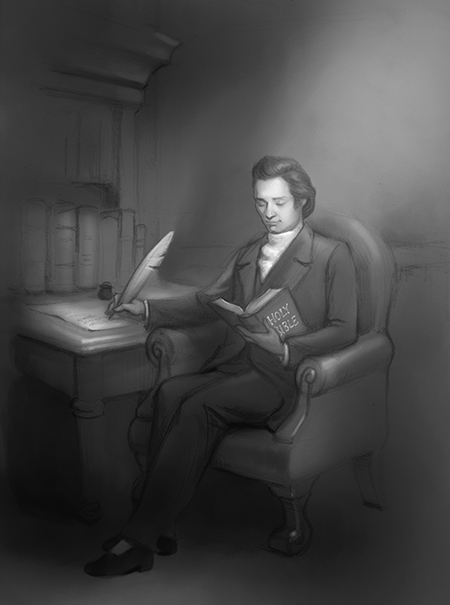
Divine Study
|
Window of Reflection
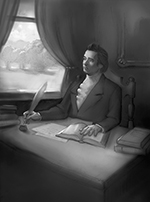 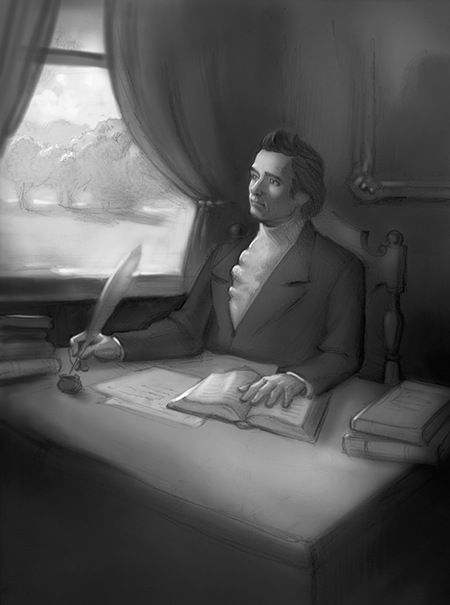
Window of Reflection
|
Enlightening Grace
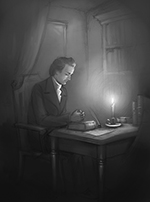 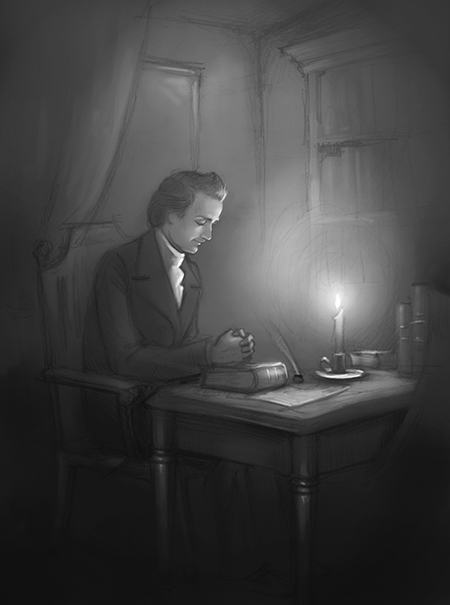
Enlightening Grace
|
136
|
883 |
101
|
961 |
168
|
991 |

C C, the third letter in the English alphabet, and the second articulation or consonant, is a palatal, nearly corresponding in sound with the Greek x, kappa, and with the Hebrew, caph. It bears a middle place in pronunciation, between the aspirate, and the palatal. It is a Roman character, borrowed from the Gr.x, or from the oriental, which was used in languages written from right to left, and when inverted and the corners rounded, becomes c In the old Etruscan, it was written with the corners rounded, but not inverted; in Arcadian, c as now written. That its sound in Latin was the same, or nearly the same, as that of kappa, may be known from the fact, that the Greeks, while the Latin was a living language, wrote kappa for the Roman c Perhaps the same character may be the basis of the Arabic. As an abbreviature, c stands for Caius, Carolus, Caesar, condemno, etc., and CC for consulibus. As a numeral c stands for 100; CC for 200; etc. In music, c after the cliff, is the mark of common time. In English, c has two sounds, or rather it represents two very different articulations of the organs; one close, like K, which occurs before a, o and u; the other, a sibilant, precisely like s, which occurs before E, I and Y. The former is distinguished in this vocabulary by c which may be called ke. In Russ. c is precisely the English s, as it was in the old Greek alphabet. |

|
| Hard-cover Edition |
331 |
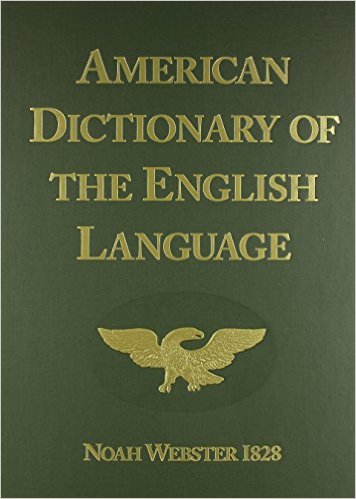 |
510 |
|
| Compact Edition |
311 |
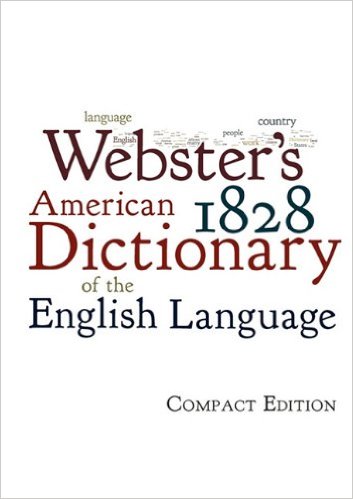 |
217 |
|
| CD-ROM |
264 |
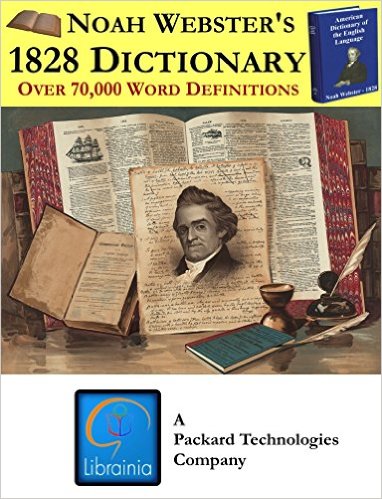 |
179 |
|
* As a note, I have purchased each of these products. In fact, as we have been developing the Project:: 1828 Reprint, I have purchased several of the bulky hard-cover dictionaries. My opinion is that the 2000-page hard-cover edition is the only good viable solution at this time. The compact edition was a bit disappointing and the CD-ROM as well. |
| [ + ] |
| Add Search To Your Site |
|
|
|
 1828.mshaffer.com › Word [c]
1828.mshaffer.com › Word [c]
